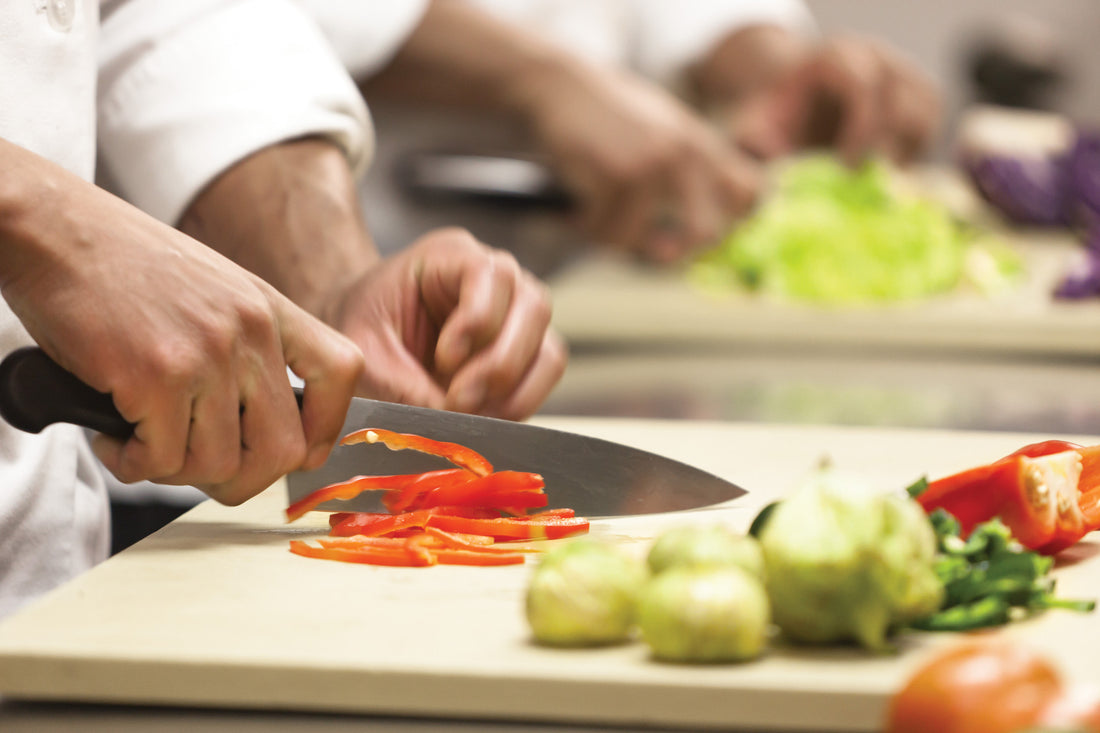Food Preparation Tips: Elevating Your Culinary Skills
Food preparation is both an art and a science. It requires not only creativity and passion but also precision, technique, and an understanding of ingredients. Whether you're a novice in the kitchen or an experienced home cook, improving your food preparation skills can make a significant difference in the flavour, texture, and presentation of your dishes. This article delves into expert tips and tricks to help you enhance your culinary expertise, offering insights into everything from selecting ingredients to mastering advanced techniques.
1. Start with the Basics: Mise en Place
Mise en place, a French term meaning “everything in its place,” is the cornerstone of efficient cooking. Before you start cooking, gather all your ingredients, measure them out, and prepare them as needed (e.g., chopping, peeling, or grating). This practice:
- Saves time and reduces stress during cooking.
- Ensures you have all necessary ingredients before you begin.
- Helps maintain cleanliness and order in the kitchen.
2. Choose Quality Ingredients
The foundation of any great dish is high-quality ingredients. Here are some tips for selecting the best:
- Produce: Opt for fresh, seasonal fruits and vegetables. Seasonal produce is often more flavourful and nutritious.
- Meat and Fish: Purchase from reputable butchers or fishmongers. Look for bright, firm flesh and avoid items with an off smell.
- Spices and Herbs: Use fresh herbs whenever possible. For spices, buy whole and grind them yourself for maximum flavour.
- Pantry Staples: Choose high-quality oils, vinegars, and grains. Extra virgin olive oil, for instance, adds depth to dressings and sautés.
3. Master Knife Skills
Good knife skills are essential for safe, efficient, and visually appealing food preparation. Here’s how to sharpen your skills:
- Invest in Quality Knives: A chef’s knife, paring knife, and serrated knife are essential.
- Keep Them Sharp: Regularly sharpen your knives to make cutting easier and safer.
- Learn Basic Techniques: Practice chopping, slicing, and dicing. Focus on consistent sizes to ensure even cooking.
- Use the Right Cutting Board: Opt for wooden or plastic boards, and always secure them with a damp cloth underneath.
4. Understand Cooking Methods
Different cooking methods can drastically affect the taste and texture of food. Familiarise yourself with these common techniques:
- Sautéing: Quick cooking in a small amount of oil over medium to high heat. Ideal for vegetables and small cuts of meat.
- Roasting: Cooking in the oven at high temperatures to develop deep flavours. Use for meats, root vegetables, and nuts.
- Boiling and Simmering: Perfect for making soups, stocks, and pasta.
- Grilling: Provides a smoky flavour and is great for meats, vegetables, and even fruits.
- Steaming: Retains nutrients and is excellent for fish and vegetables.
5. Seasoning and Flavour Balancing
Seasoning is key to elevating a dish. Here’s how to do it effectively:
- Salt: Enhance natural flavours with a pinch of salt, but avoid over-salting.
- Acid: Balance rich or fatty dishes with acidic ingredients like lemon juice or vinegar.
- Sweetness: Use a touch of sugar or honey to counterbalance sour or bitter flavours.
- Spices: Experiment with combinations to create depth and complexity.
- Taste as You Go: Adjust seasoning gradually and taste frequently.
6. Utilise Kitchen Gadgets Wisely
Modern kitchen gadgets can save time and effort. However, it’s essential to know when and how to use them:
- Blender or Food Processor: For pureeing soups, making sauces, or grinding nuts.
- Mandoline: For precise slicing of vegetables.
- Instant Pot or Slow Cooker: Simplifies cooking stews, soups, and braised dishes.
- Digital Thermometer: Ensures meats and baked goods are cooked to the correct temperature.
- Microplane Grater: Perfect for zesting citrus or grating hard cheeses.
7. Batch Cooking and Meal Prep
To save time during busy weeks, incorporate batch cooking and meal prep into your routine:
- Plan Ahead: Decide on meals for the week and create a shopping list.
- Cook in Batches: Prepare large portions of staples like grains, roasted vegetables, or proteins.
- Portion and Store: Divide meals into containers and refrigerate or freeze for later use.
- Label and Date: Clearly mark containers to avoid confusion and reduce waste.
8. Food Safety and Hygiene
Maintaining cleanliness and safety in the kitchen is non-negotiable:
- Wash Hands and Surfaces: Prevent cross-contamination by cleaning hands, knives, and cutting boards frequently.
- Store Ingredients Properly: Refrigerate perishables promptly and use airtight containers for dry goods.
- Cook to Safe Temperatures: Use a thermometer to ensure meats reach their recommended internal temperature.
- Avoid the Danger Zone: Keep food out of the 5°C to 60°C range to prevent bacterial growth.
9. Plating and Presentation
The visual appeal of a dish can be as important as its taste. Improve your plating skills with these tips:
- Use White Plates: They provide a neutral background, allowing food colours to stand out.
- Play with Heights and Layers: Stack or layer elements for a dynamic presentation.
- Garnish Thoughtfully: Use edible garnishes like herbs, microgreens, or a drizzle of sauce.
- Keep it Clean: Wipe plate edges for a professional finish.
10. Experiment and Innovate
Don’t be afraid to step outside your comfort zone:
- Try New Ingredients: Explore international cuisines and unfamiliar produce.
- Mix Techniques: Combine methods like grilling and roasting to create unique flavours.
- Reinvent Leftovers: Transform yesterday’s meal into something new and exciting.
- Follow Trends: Stay inspired by modern culinary techniques and trends, such as molecular gastronomy or fermentation.
11. Mindful Cooking and Enjoyment
Cooking should be a joyful and mindful activity:
- Take Your Time: Avoid rushing; enjoy the process.
- Engage Your Senses: Pay attention to textures, aromas, and colours.
- Cook with Love: Food prepared with care and attention often tastes better.
- Share Meals: Eating with loved ones enhances the experience.
Improving your food preparation skills involves a combination of planning, technique, and creativity. By focusing on quality ingredients, mastering essential techniques, and embracing new ideas, you can elevate your cooking and create dishes that delight the palate and nourish the soul. Whether you’re making a simple weeknight dinner or an elaborate feast, these tips will help you approach cooking with confidence and enthusiasm.
Happy cooking!

